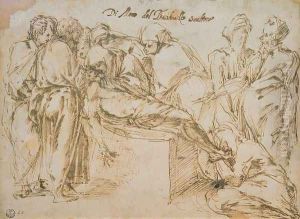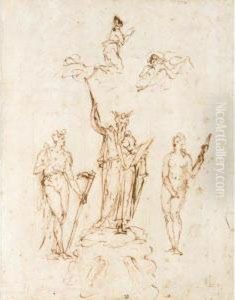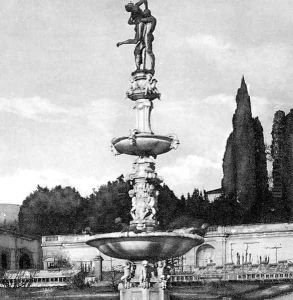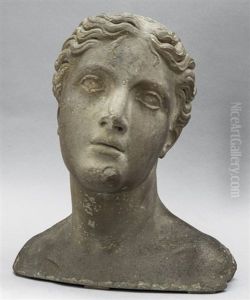Niccolo Tribolo Paintings
Niccolò di Raffaello di Niccolò dei Pericoli, commonly known as Il Tribolo, was an Italian Mannerist artist, born in 1500 in Florence, Italy. He was an important figure in the Italian Renaissance, particularly in the realm of garden and fountain design. Although he trained originally as a sculptor under the guidance of Andrea Sansovino, his career evolved to encompass a wide range of artistic endeavors including garden and landscape design, architecture, and engineering.
Tribolo's early sculptural work reflected the influence of his teacher and other prominent contemporaries such as Michelangelo. However, he is most renowned for his contributions to the design of gardens, where he was a pioneer in integrating sculpture, water features, and horticulture to create harmonious and innovative outdoor spaces. One of his most significant projects was the design of the Boboli Gardens for the Medici family in Florence. This work exemplified the transition from the more structured Renaissance garden to the freer, more naturalistic Mannerist style.
Throughout his career, Tribolo held several prestigious positions, including that of the court artist for Duke Cosimo I de' Medici. His works often reflected the grandeur and the humanistic ideals of the Medici court. Despite the importance of his horticultural designs, few of his garden projects have survived in their original form, as changing tastes and the passage of time have led to their alteration or decay.
Tribolo's work in garden design was not only artistically significant but also technically innovative. He was involved in complex engineering projects, including the design of waterworks and fountains that required a deep understanding of hydraulics. His ability to merge technical skill with artistic vision set a precedent for future generations of landscape architects and designers.
Il Tribolo died in 1550 in Florence. His legacy, however, lives on, particularly in the field of landscape architecture, where his approach to the design of gardens as integrated works of art continues to inspire. Tribolo's impact on garden design can be seen as a key moment in the history of landscape architecture, bridging the gap between the formal gardens of the Renaissance and the more expressive and imaginative designs that followed.



